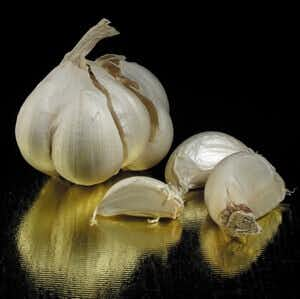
A few weeks ago we got a fascinating email from a doctor. He wants to remain anonymous, for reasons you’ll soon see. However, his theory on how tales about vampires may have gained ground really intrigued us. Perhaps you will find it interesting, too.
He wrote:
I am a 67 year old physician, and 8 years ago discovered I have a novel mutation for a rare disease called variegate porphyria. For 3-4 years before this, I was chronically ill with recurrent episodes of severe abdominal pain, syncope (fainting), pain in the right buttock area and sometimes down the thigh. These attacks were often so severe that hospitalization was required, at which time I was found to also have high blood pressure (otherwise normal in between attacks). This is an unusually late time in life for the disease, a metabolic disorder, to initially present. Once the diagnosis was made, I hoped to prevent subsequent attacks by avoiding exposure to the trigger agents described in textbooks and the medical literature: most commonly, alcohol and various drugs. Despite avoiding these known triggers, I felt no better.
Of course, when the diagnosis was established, I was referred to experts in the porphyrias (there are several varieties corresponding to different locations in the metabolic pathway) but we could not achieve symptomatic improvement. I should also say that some experts were skeptical that the novel mutation was the certain root cause of my symptoms. Efforts at symptom improvement included my keeping a detailed diary of dietary intake for every meal over several weeks. No patterns seemed to emerge. Determined to reverse what appeared to me an ominous trend of declining function, I searched via Google for possible insight beyond current accepted medical knowledge.
Did Vampires Have Porphyria?
One day, I came across an online posting by someone who conjectured that the legendary vampires of Eastern Europe might have had porphyria. The porphyrin synthetic pathway in the liver produces a key component of hemoglobin for red blood cells. If there is a problem with precursor substances moving down the synthetic chain because of a less than fully functional intermediary reaction, such as occurs in variegate porphyria, then the substances that would ordinarily proceed past that point in the chain begin to accumulate in relation to how much precursor is fed into the chain. Current medical therapy for a porphyria attack entails intravenous administration of hemin, a substance closely related to hemoglobin, which down-regulates the porphyrin synthetic pathway. By “turning down the tap” controlling the pathway, the accumulation of intermediary products is mitigated and the symptoms of the attack improve. The author of the conjecture had proposed that those who had a strong desire to drink blood might have done so because it made them feel good; because actually, they had porphyria and the ingested blood down-regulated their porphyrin synthetic pathway.
Why Do Vampires Avoid Garlic?
Since nothing I had tried to date had helped me feel better, I gave this idea some thought, quickly realizing that those so-called vampires also avoided garlic. If indeed those “vampires” had porphyria, might there have been a genuine reason they avoided exposure to garlic? I decided to begin a two week trial of avoiding items in the allium plant family, which includes garlic, onion, shallots, chives, and leeks. By the end of the trial, I felt like a new person, better than I had felt in years! Still, this whole idea did seem bizarre, so I then had a meal containing garlic and onion. Hours later, I had another porphyria attack.
Soon after gaining this understanding, I found an article in the Scandinavian pharmacology literature describing how sulfonated compounds in plants of the allium family up-regulate a metabolic pathway in the liver related to porphyrin synthesis.
I’ve shared my experience with medical experts involved in the NIH rare disease program. It’s unclear whether information associated with my novel mutation is applicable to others with porphyria.

